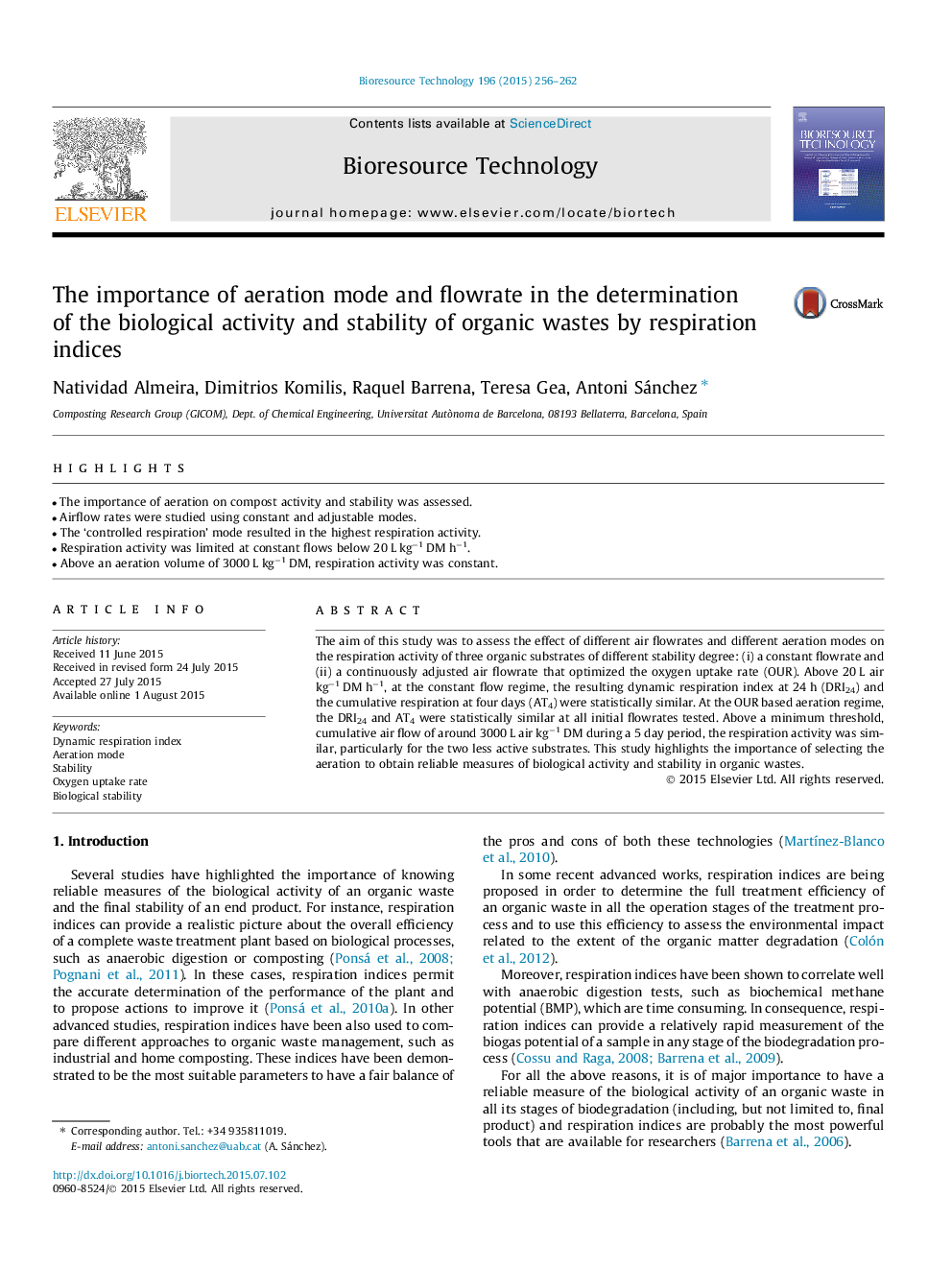| Article ID | Journal | Published Year | Pages | File Type |
|---|---|---|---|---|
| 7073448 | Bioresource Technology | 2015 | 7 Pages |
Abstract
The aim of this study was to assess the effect of different air flowrates and different aeration modes on the respiration activity of three organic substrates of different stability degree: (i) a constant flowrate and (ii) a continuously adjusted air flowrate that optimized the oxygen uptake rate (OUR). Above 20 L air kgâ1 DM hâ1, at the constant flow regime, the resulting dynamic respiration index at 24 h (DRI24) and the cumulative respiration at four days (AT4) were statistically similar. At the OUR based aeration regime, the DRI24 and AT4 were statistically similar at all initial flowrates tested. Above a minimum threshold, cumulative air flow of around 3000 L air kgâ1 DM during a 5 day period, the respiration activity was similar, particularly for the two less active substrates. This study highlights the importance of selecting the aeration to obtain reliable measures of biological activity and stability in organic wastes.
Related Topics
Physical Sciences and Engineering
Chemical Engineering
Process Chemistry and Technology
Authors
Natividad Almeira, Dimitrios Komilis, Raquel Barrena, Teresa Gea, Antoni Sánchez,
